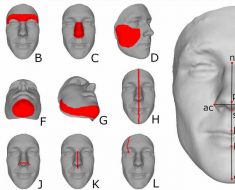
Brain imaging studies have shown structural and functional abnormalities in people with psychosis in the connections between the cortex and the thalamus, the major waystation for incoming sensory information and a critical regulator of cortical activity. A new study shows that those differences are not present during development, but that the integrity of the connections is compromised in youth with psychosis spectrum symptoms.
“This work provides insight into the fundamental changes occurring over development in white matter connections linking the thalamus and cortex, and how developmental patterns differ in youth with psychosis spectrum symptoms at risk for developing a psychotic disorder,” said lead author, Suzanne Avery, Ph.D., Vanderbilt University Medical Center, Nashville, TN, of the study that appears in Biological Psychiatry: Cognitive Neuroscience and Neuroimaging.
White matter refers to parts of the brain made up of fatty, myelinated axons, which send information across wide-ranging brain areas. Myelin is generated in non-neuronal glial cells that wrap around neuronal axons as insulation to speed signaling. Disruption in white matter structure has been seen in the brains of people with psychosis and is hypothesized to play a role in cognitive deficits.
For the current study, Dr. Avery and colleagues examined data from 1,144 participants aged 8 to 22 years old; 316 were typically developing whereas the rest had psychosis spectrum symptoms or some other psychopathology.
Dr. Avery said, “Somewhat surprisingly, our findings show that white matter structural tracts are relatively stable throughout typical development and are similar in children at higher risk for psychosis, suggesting the structural deficits we find often detected in psychosis patients may have occurred later, near the onset of illness, or may be limited to only those individuals who will go on to develop a psychotic disorder.”
However, when the authors examined the white matter at a microstructural level, she said, “we found that the microstructural integrity of white matter tracts increases substantially over development, particularly in tracts linking the thalamus to the prefrontal and posterior parietal cortex.” Moreover, structural integrity of these tracts was lower in children exhibiting psychosis spectrum symptoms and was associated with cognitive function.
“This suggests a critical role for abnormal developmental processes, such as deficits in white matter myelination, in the risk for both cognitive deficits and psychosis,” Dr. Avery added. “This work could have implications for the early detection and treatment of children at risk for developing a psychotic illness. Novel therapeutic approaches should target mechanisms that increase myelination, as hypomyelination may increase cognitive deficits and risk for worsening psychosis symptoms.”
Source: Read Full Article





